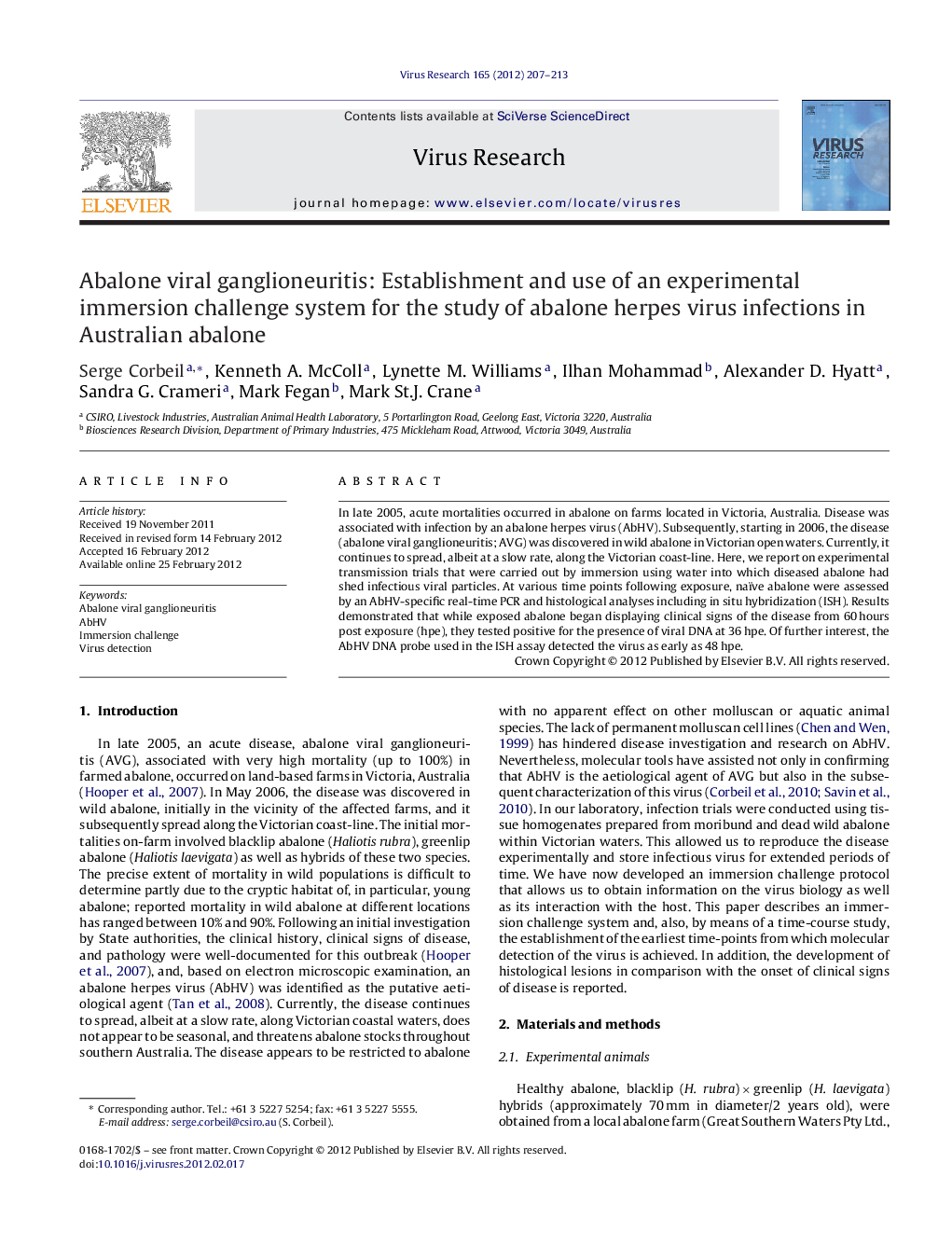| Article ID | Journal | Published Year | Pages | File Type |
|---|---|---|---|---|
| 6143197 | Virus Research | 2012 | 7 Pages |
In late 2005, acute mortalities occurred in abalone on farms located in Victoria, Australia. Disease was associated with infection by an abalone herpes virus (AbHV). Subsequently, starting in 2006, the disease (abalone viral ganglioneuritis; AVG) was discovered in wild abalone in Victorian open waters. Currently, it continues to spread, albeit at a slow rate, along the Victorian coast-line. Here, we report on experimental transmission trials that were carried out by immersion using water into which diseased abalone had shed infectious viral particles. At various time points following exposure, naïve abalone were assessed by an AbHV-specific real-time PCR and histological analyses including in situ hybridization (ISH). Results demonstrated that while exposed abalone began displaying clinical signs of the disease from 60Â hours post exposure (hpe), they tested positive for the presence of viral DNA at 36Â hpe. Of further interest, the AbHV DNA probe used in the ISH assay detected the virus as early as 48Â hpe.
⺠We established an immersion challenge system for the abalone herpes virus (AbHV). ⺠Presence of lesions and viral DNA in tissues was assessed at various time points. ⺠Histopathology and PCR allowed virus detection as early as 36 h post-challenge.
